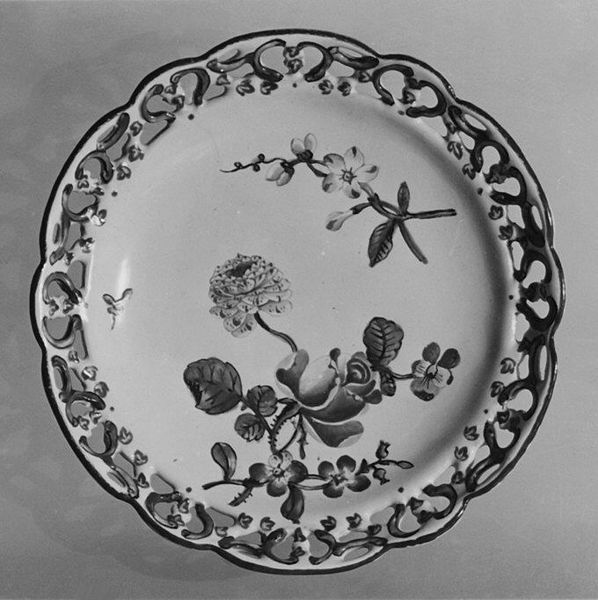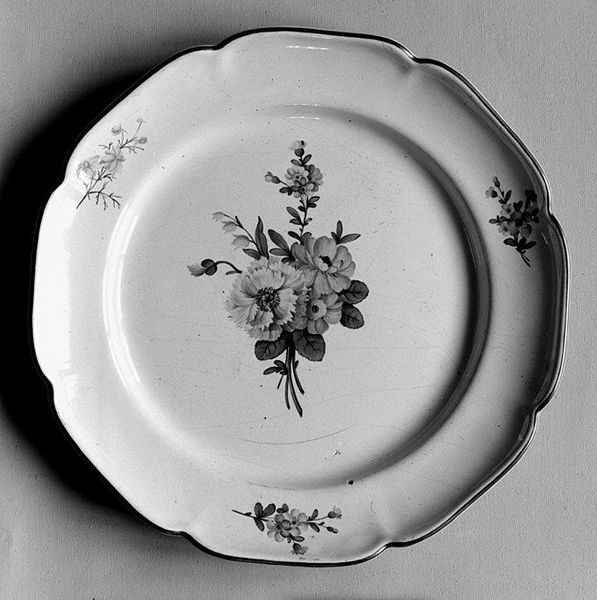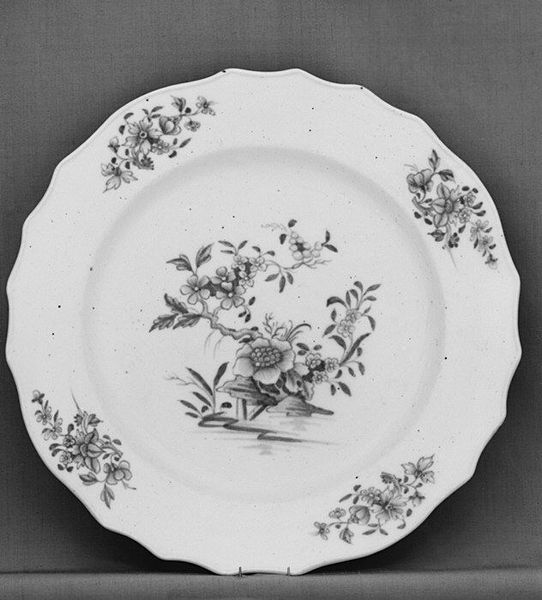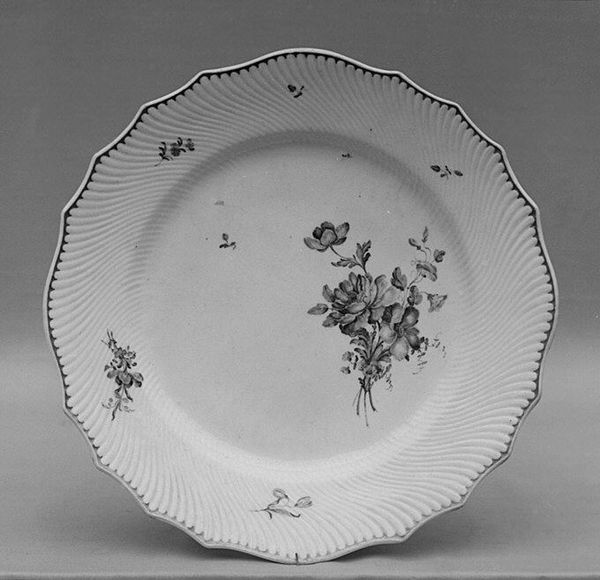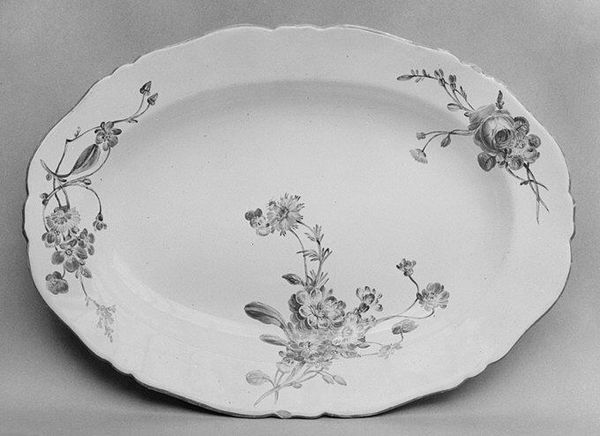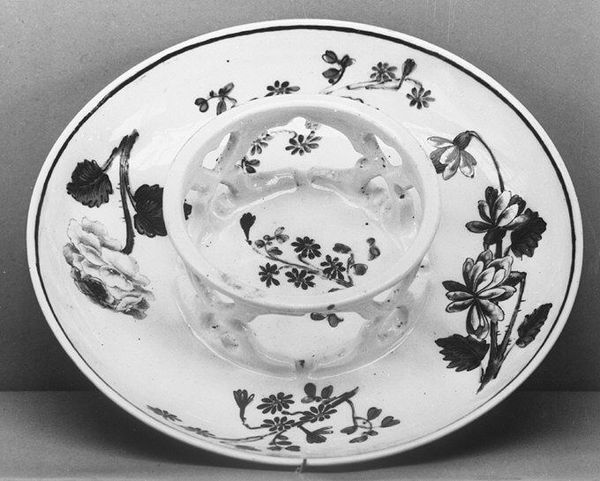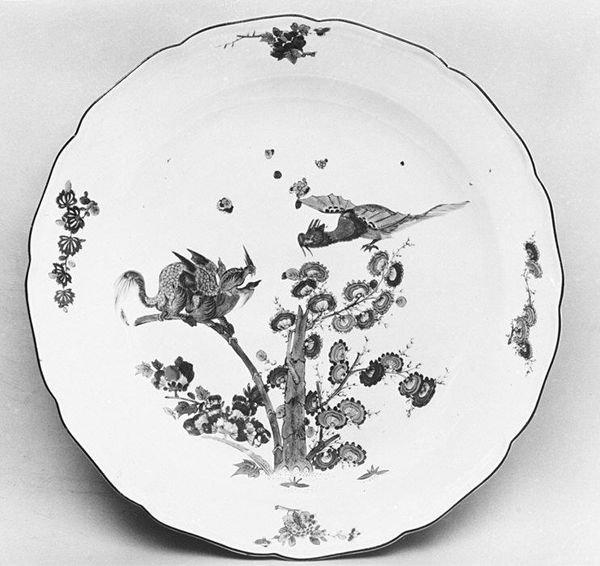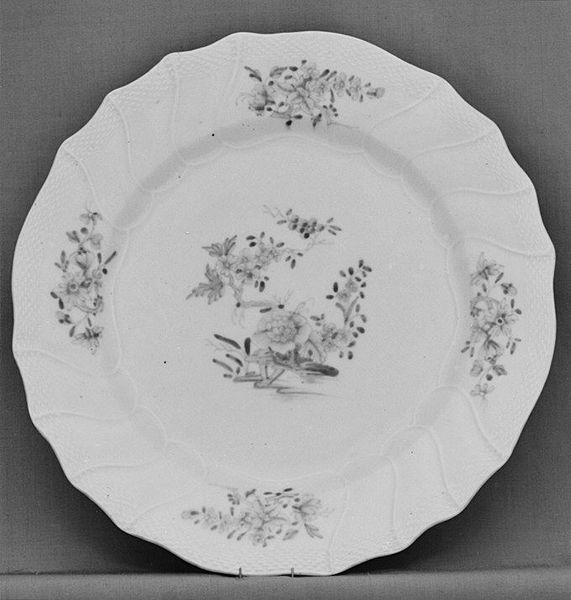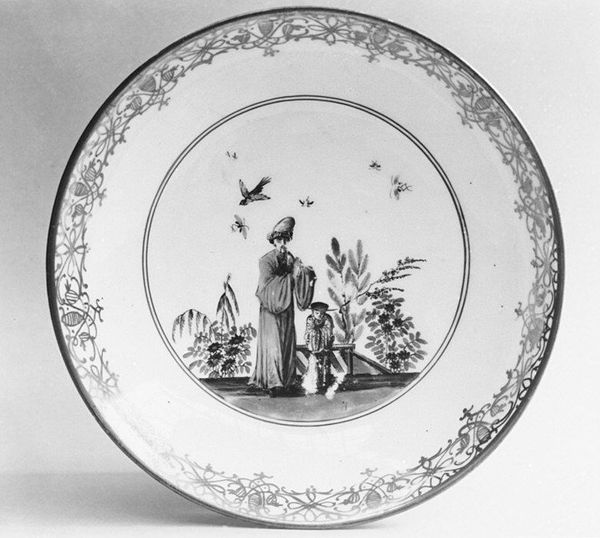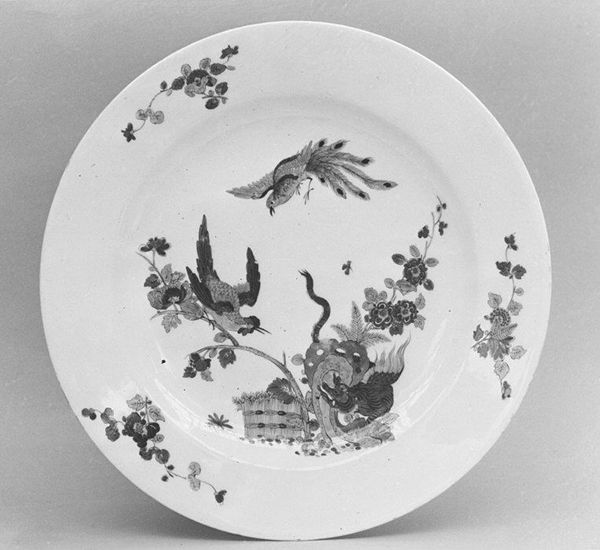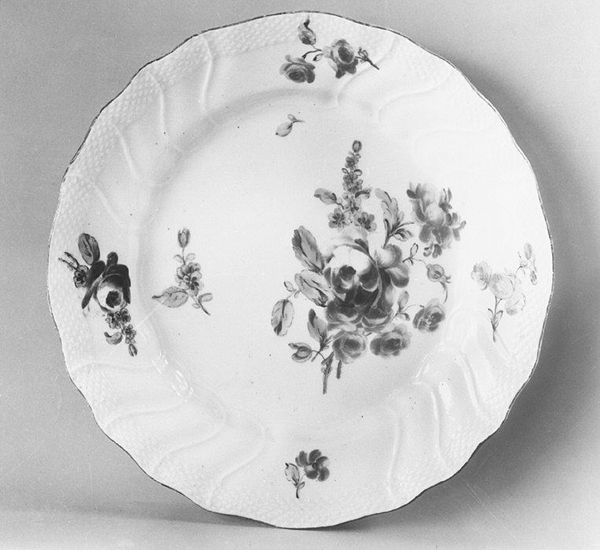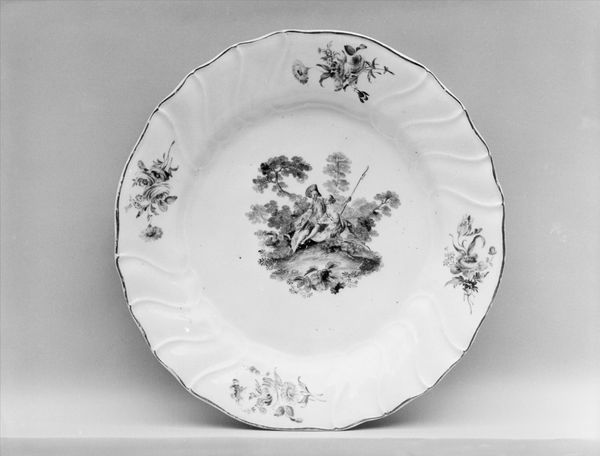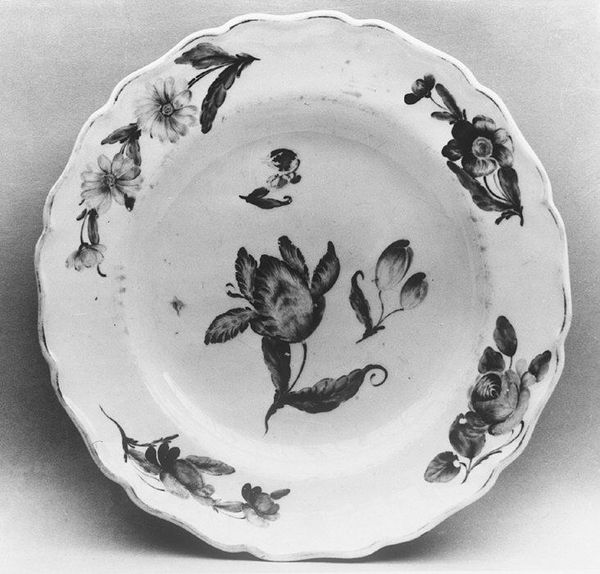
ceramic, porcelain, sculpture
#
ceramic
#
porcelain
#
sculpture
#
decorative-art
#
rococo
Dimensions: Diameter: 9 5/8 in. (24.4 cm)
Copyright: Public Domain
Curator: So, here we have a delicate porcelain plate, likely made between 1745 and 1775, originating from the Veuve Perrin Factory. It resides here at the Metropolitan Museum of Art. Editor: My first thought is how unexpectedly punk rock this seems for decorative art! The negative space in the border is aggressive, and contrasts sharply with the floral decoration. Curator: You think so? I see more Rococo sensibility. All flowing lines and naturalistic motifs. It’s very light and playful. The asymmetry in the floral arrangement is what pulls my focus. What do you make of that, compositionally? Editor: Right, Rococo’s fondness for the asymmetrical… But this isn't merely decorative—it subtly subverts traditional notions of beauty. Those precisely rendered blossoms exist beside the harsh geometry of the openwork, maybe mirroring the era's social tensions simmering beneath the surface of courtly life. Curator: A fair point. It does make one ponder what type of meals might have been placed upon it, and where. Think about those lavish banquets… How do you imagine it was used? Editor: Probably to display wealth and refinement in aristocratic circles, yet also normalizing exploitative labor. Porcelain production at that time involved brutal conditions for workers both locally and abroad, highlighting uncomfortable historical contexts surrounding beauty and privilege. Curator: I hadn’t thought of the human cost of producing this. It gives me chills now. It makes this beautiful piece a stark reminder of an unsettling truth, don't you think? Editor: Exactly! Art isn’t created in a vacuum, and recognizing power dynamics offers opportunities for reinterpretation. Curator: Well, next time I am about to use a fancy porcelain plate, I might pause for a moment of reflection. What a plate! Editor: Yes. To paraphrase Audre Lorde: "It is not our differences that divide us. It is our inability to recognize, accept, and celebrate those differences.” Perhaps through that recognition we see its beauty differently too.
Comments
No comments
Be the first to comment and join the conversation on the ultimate creative platform.
